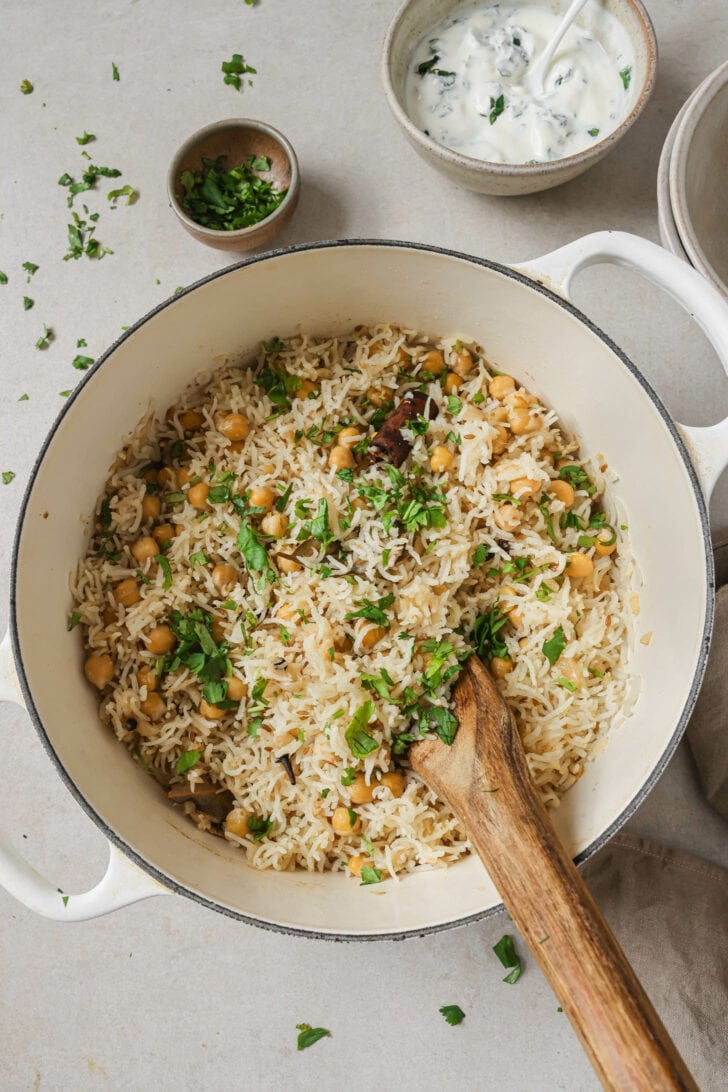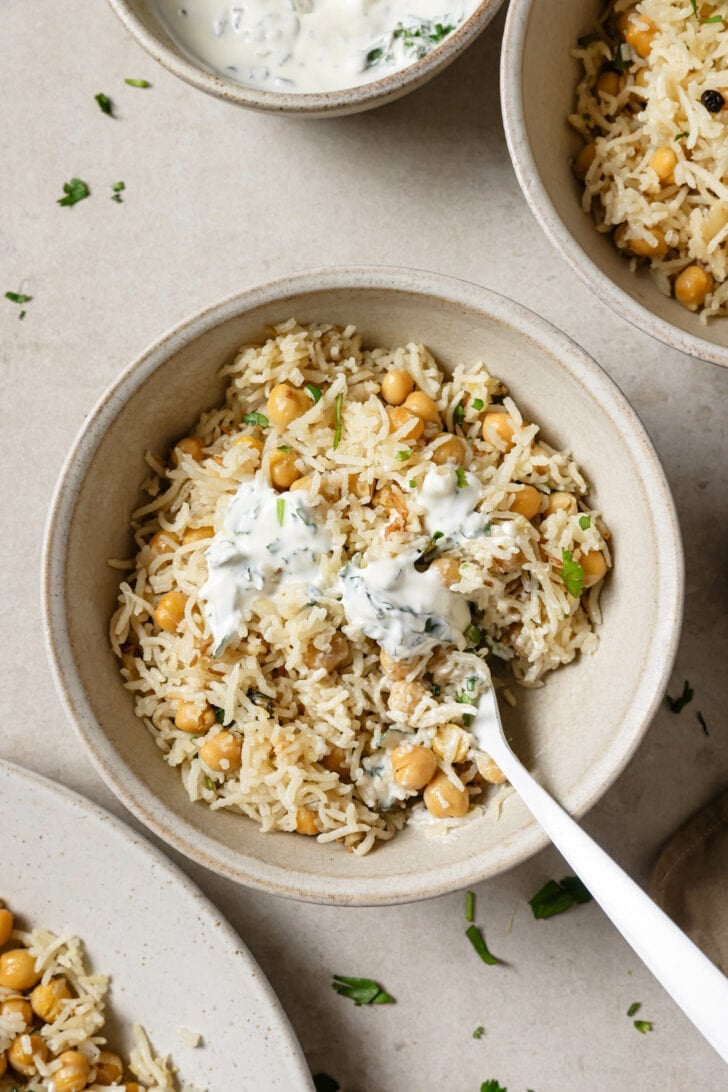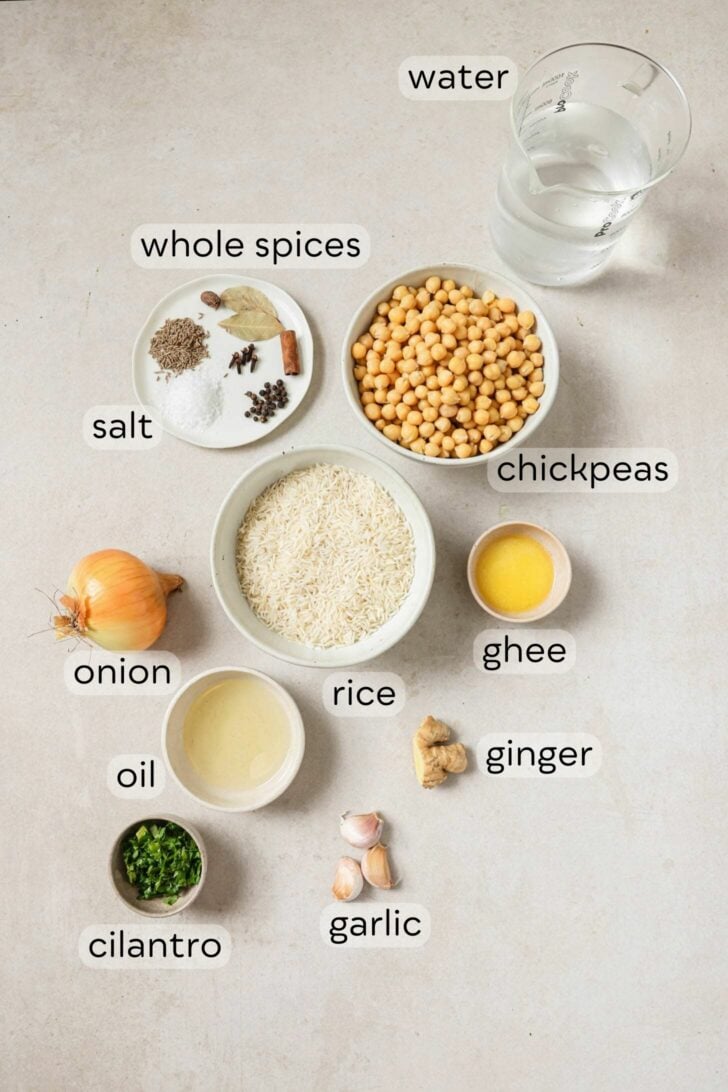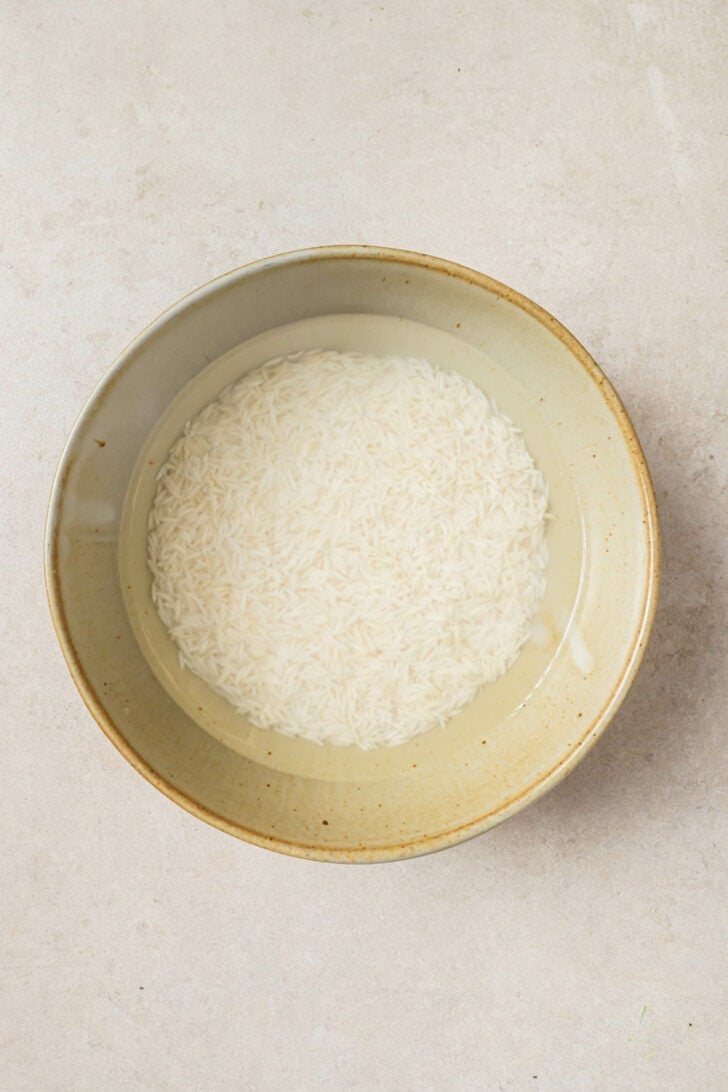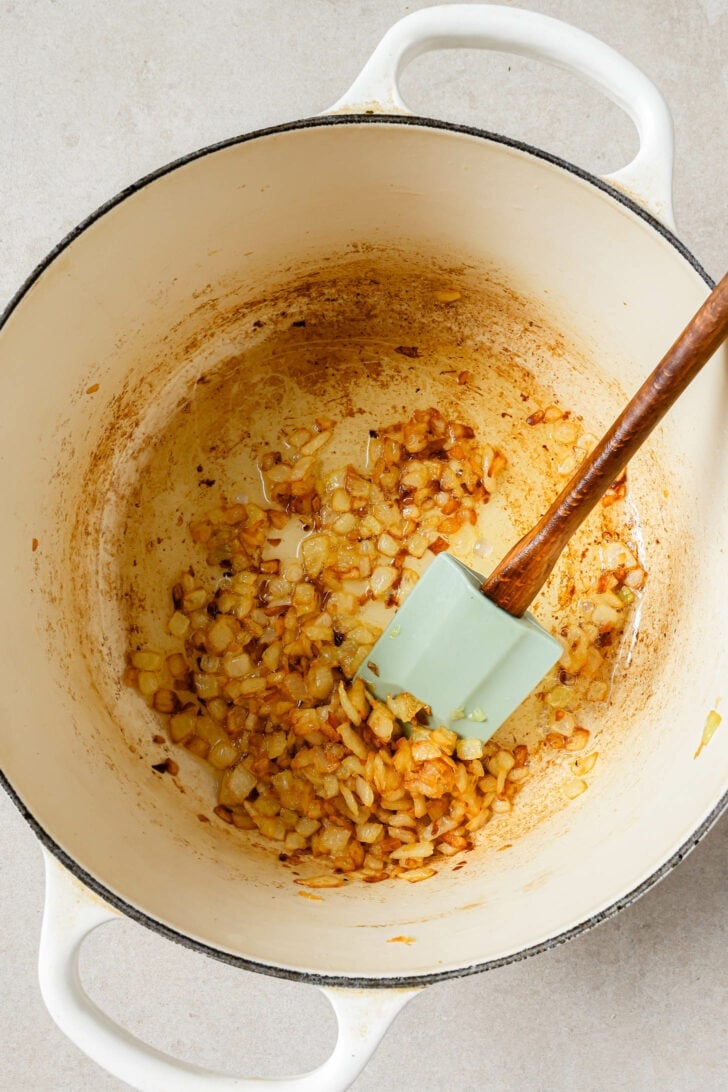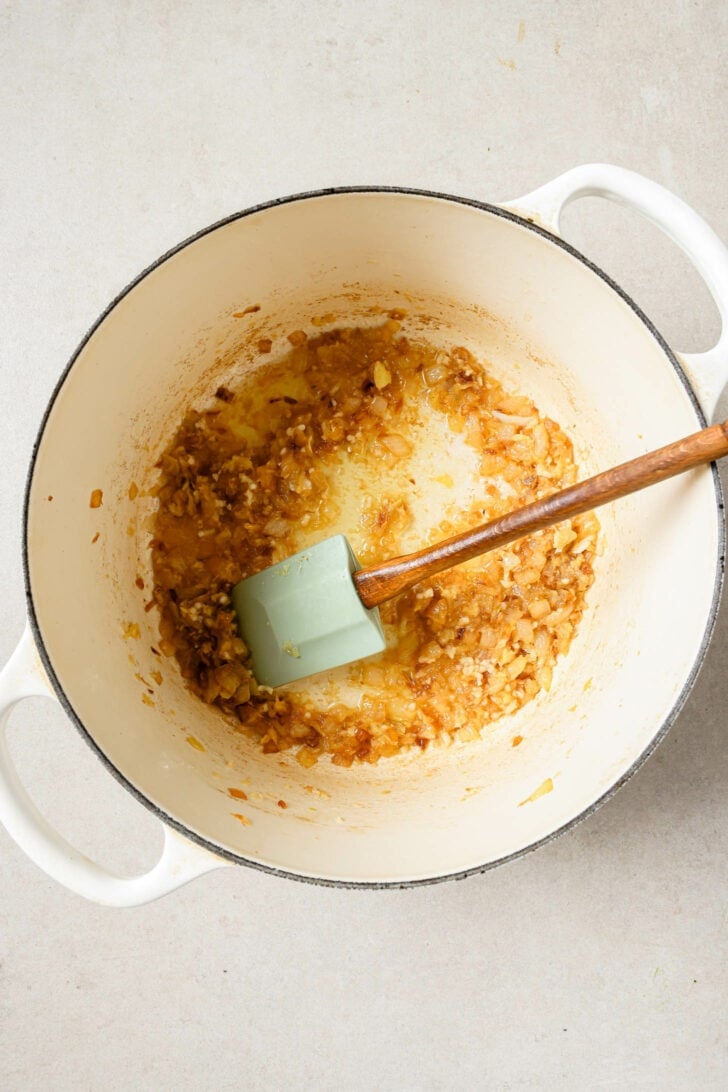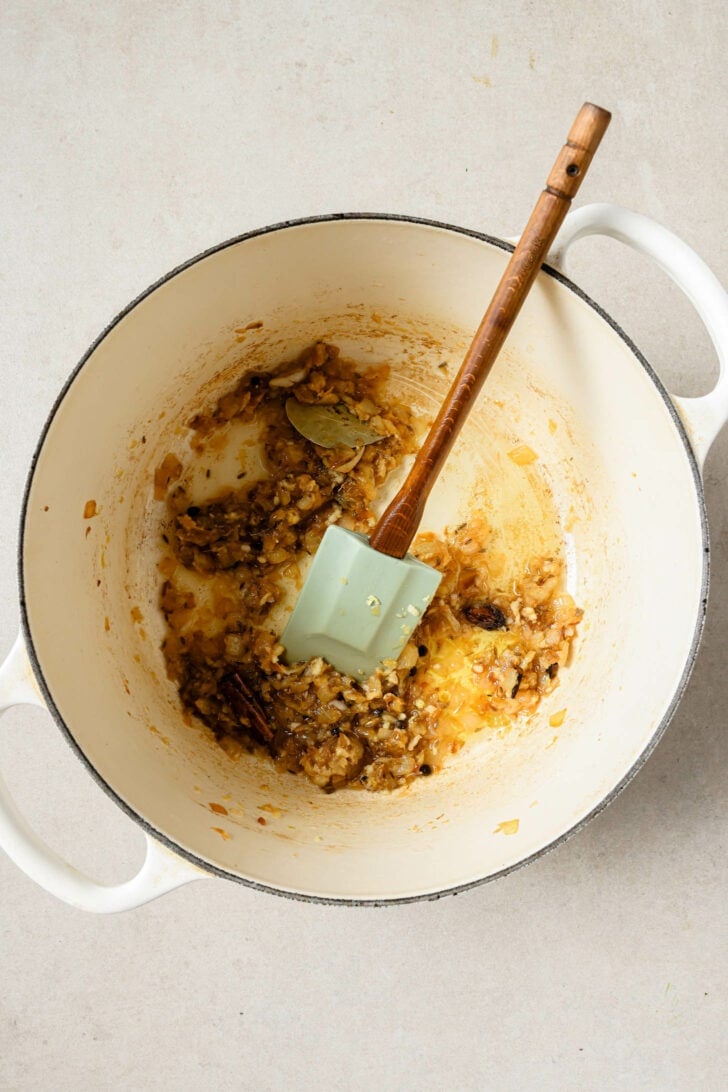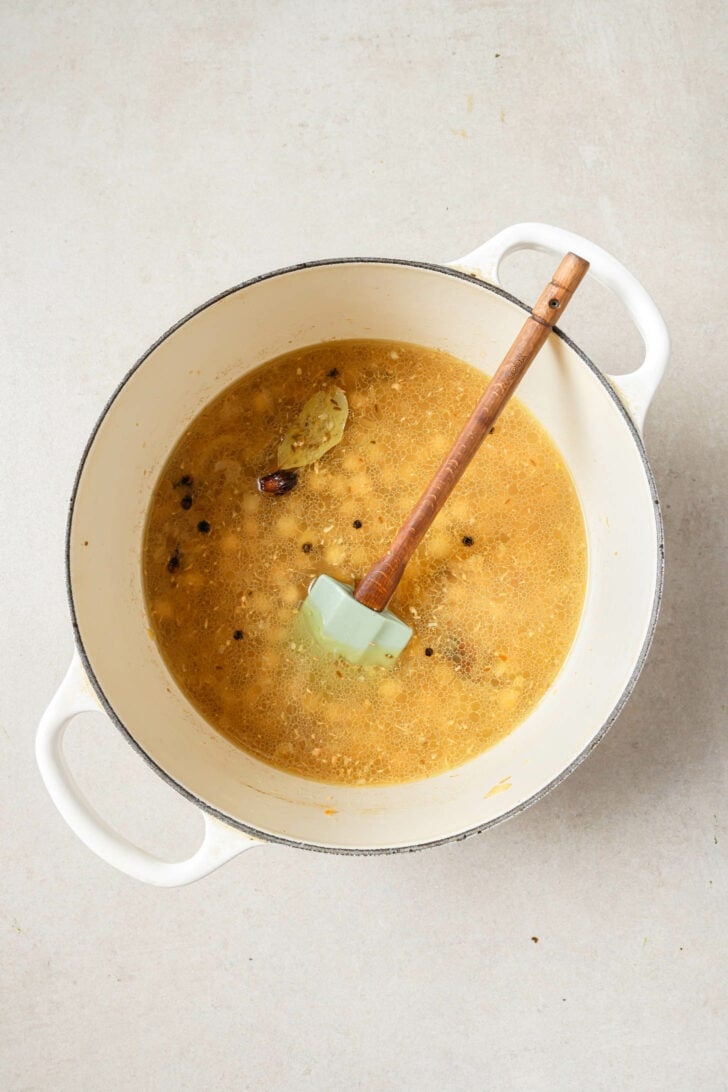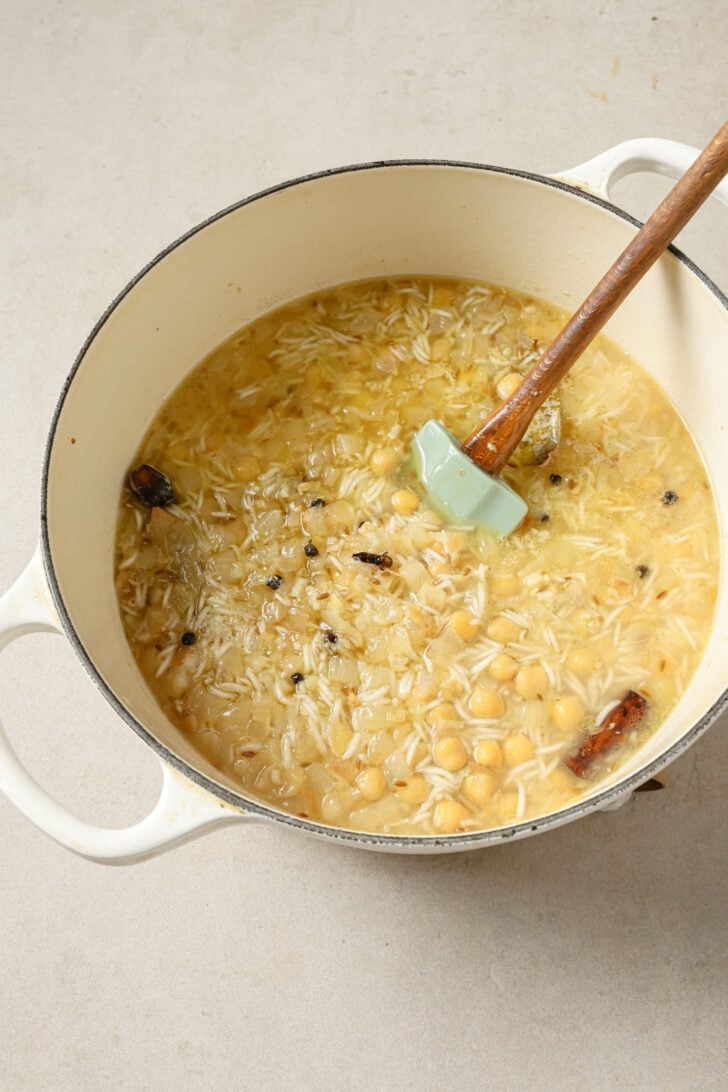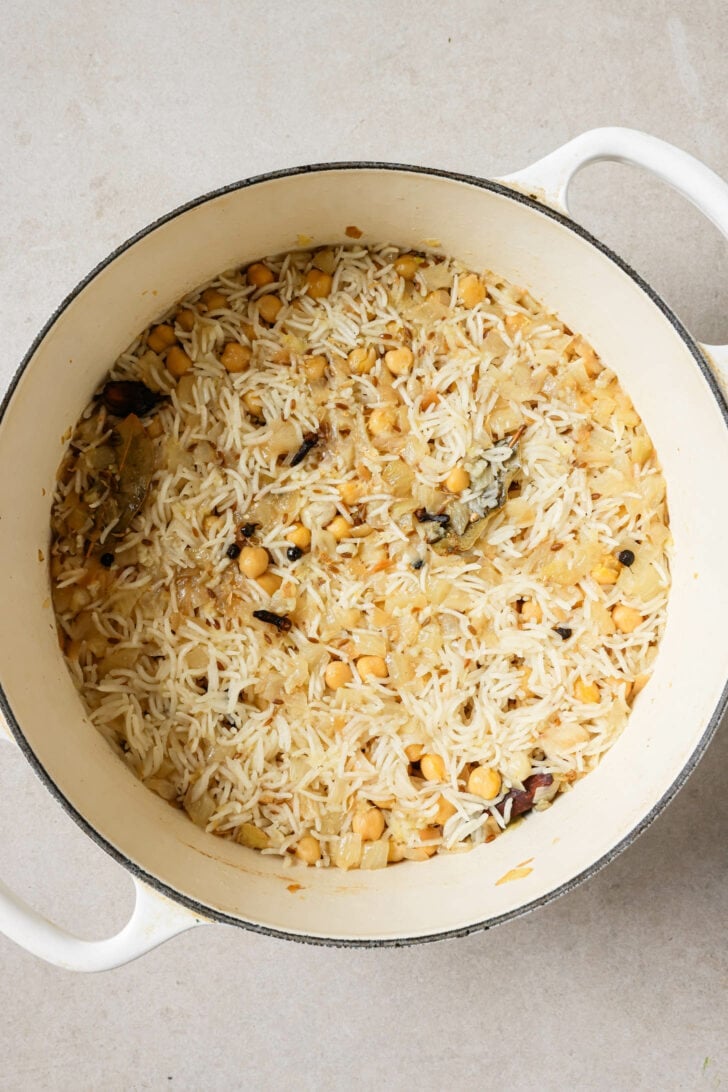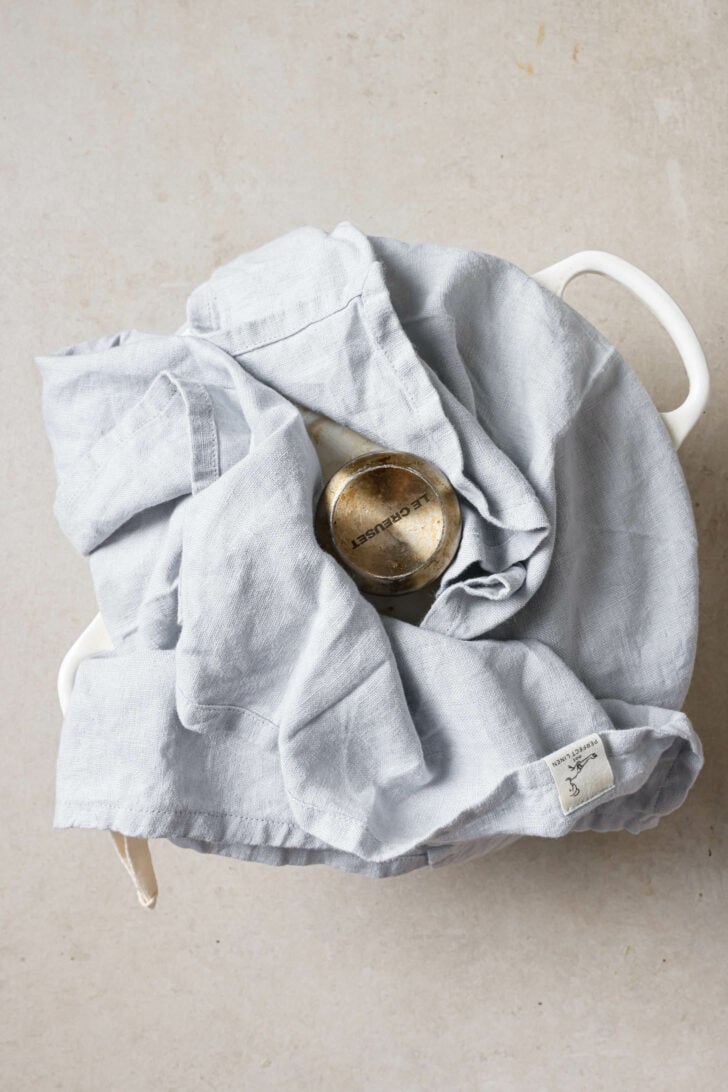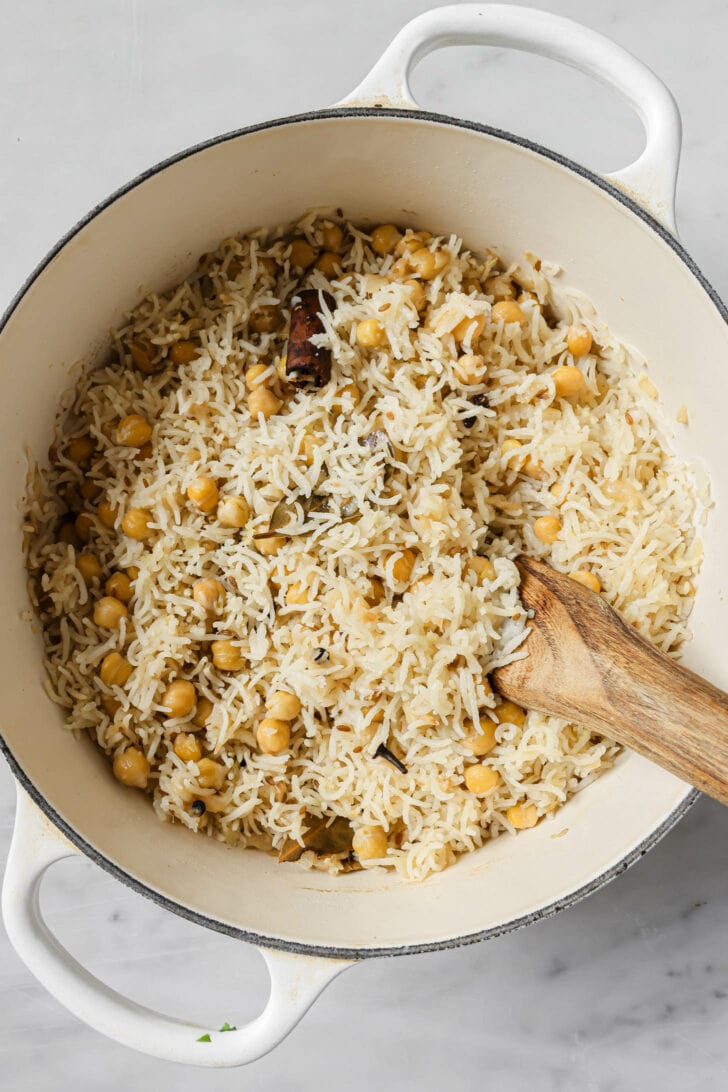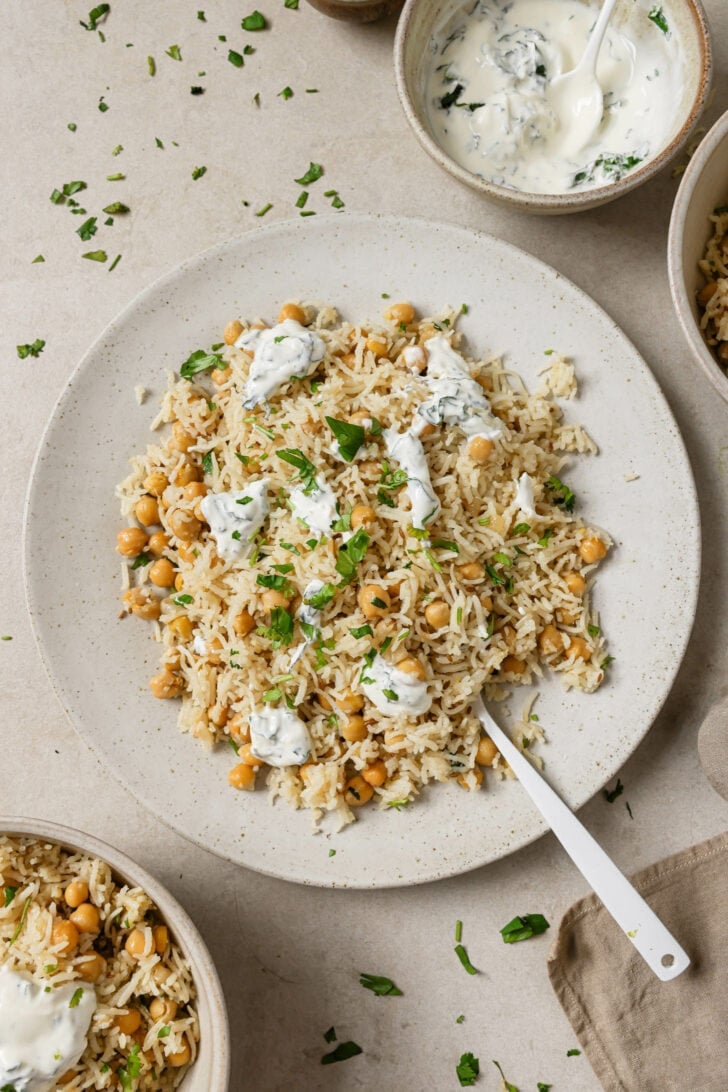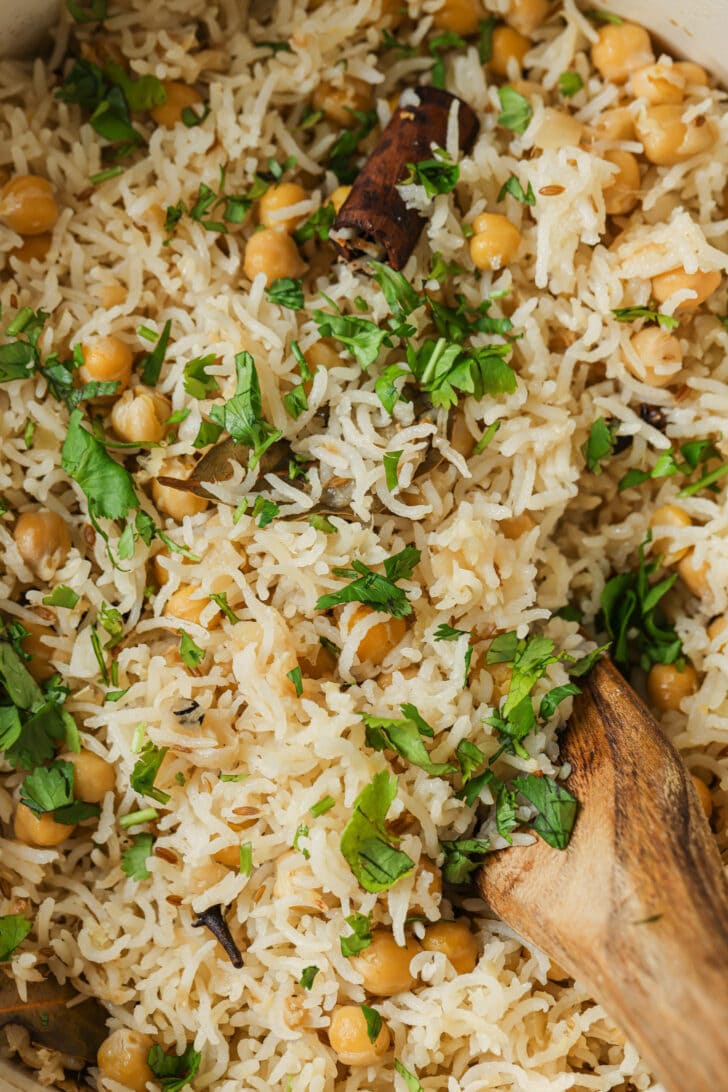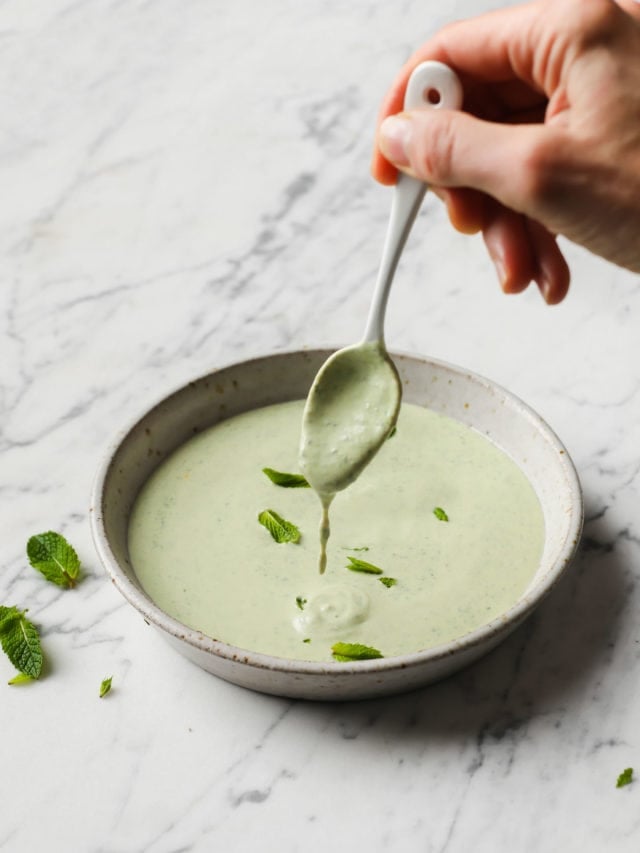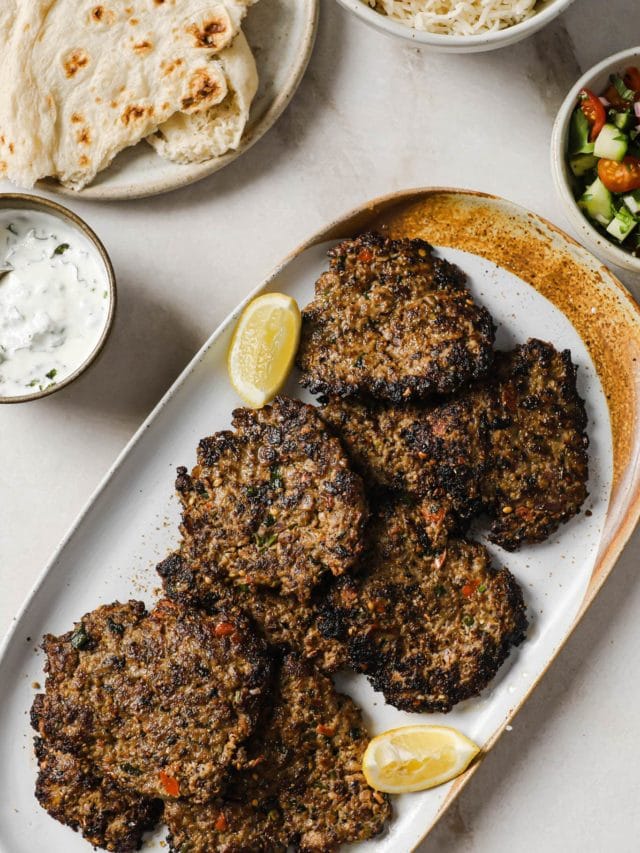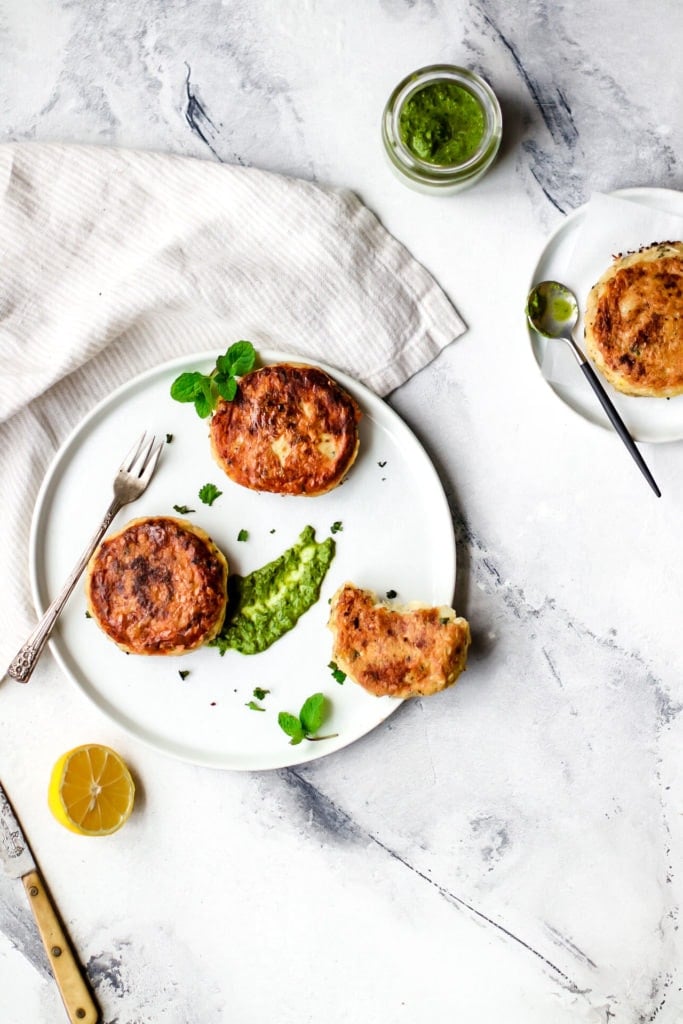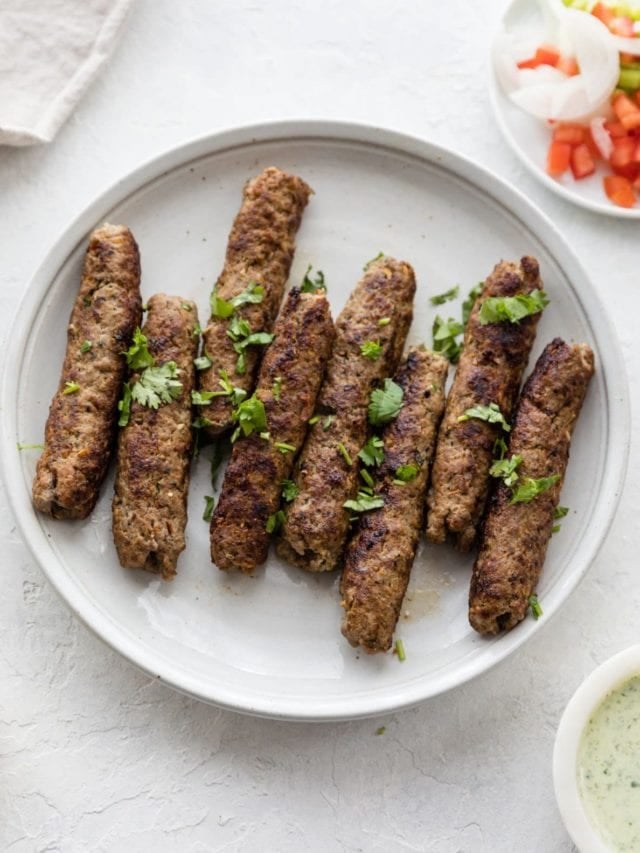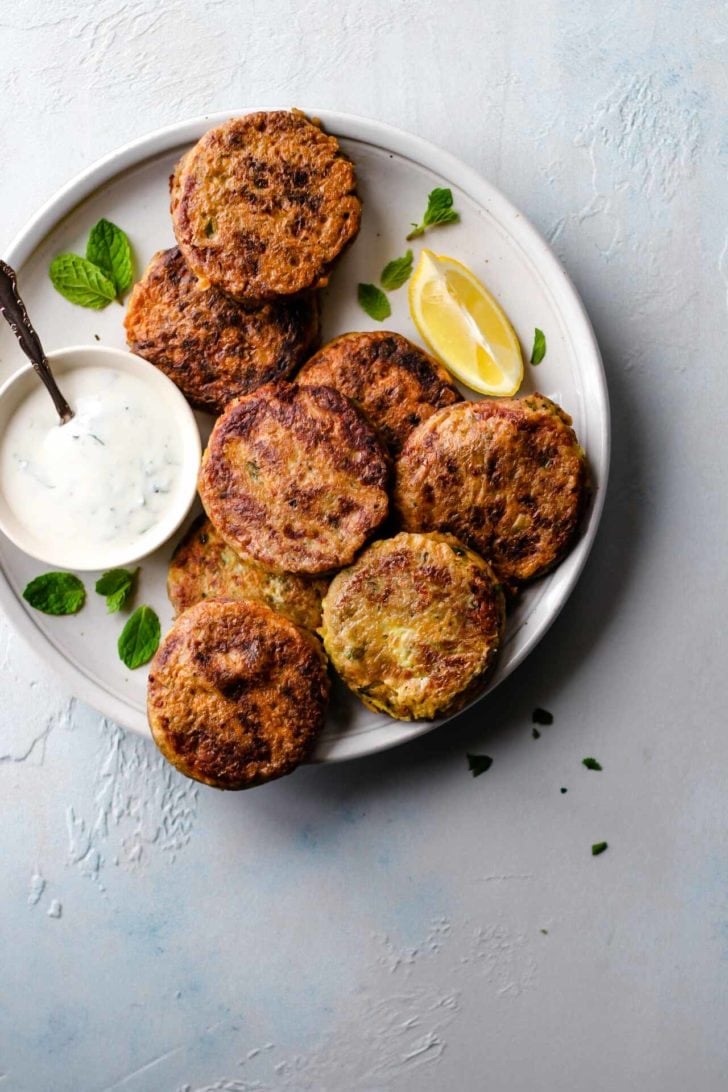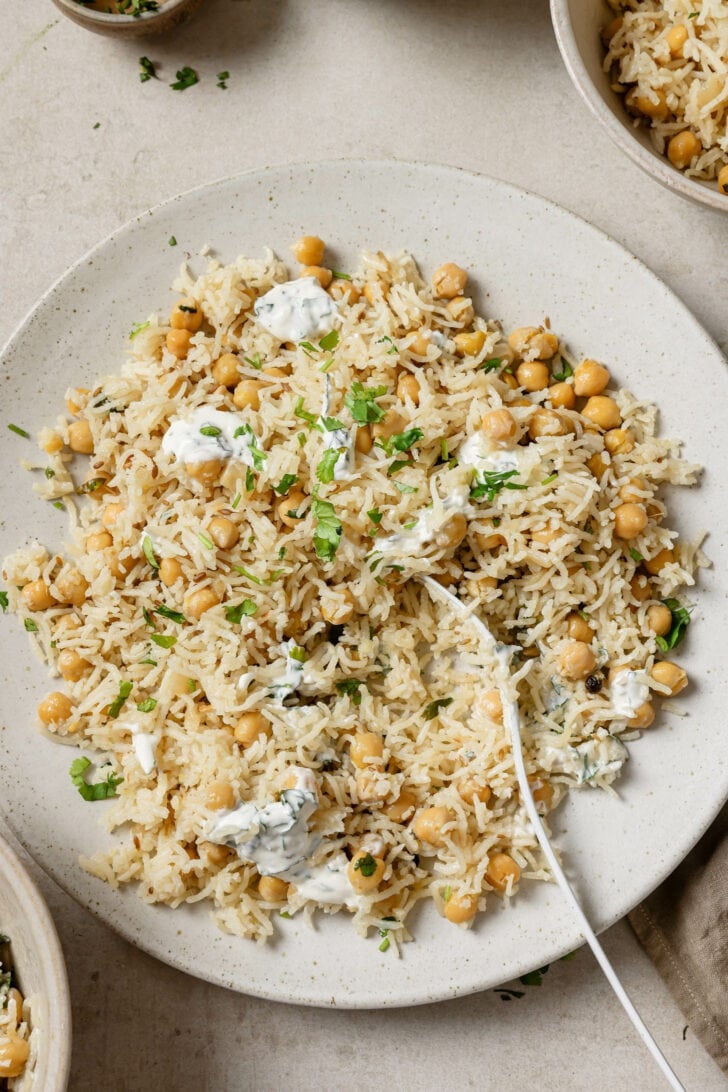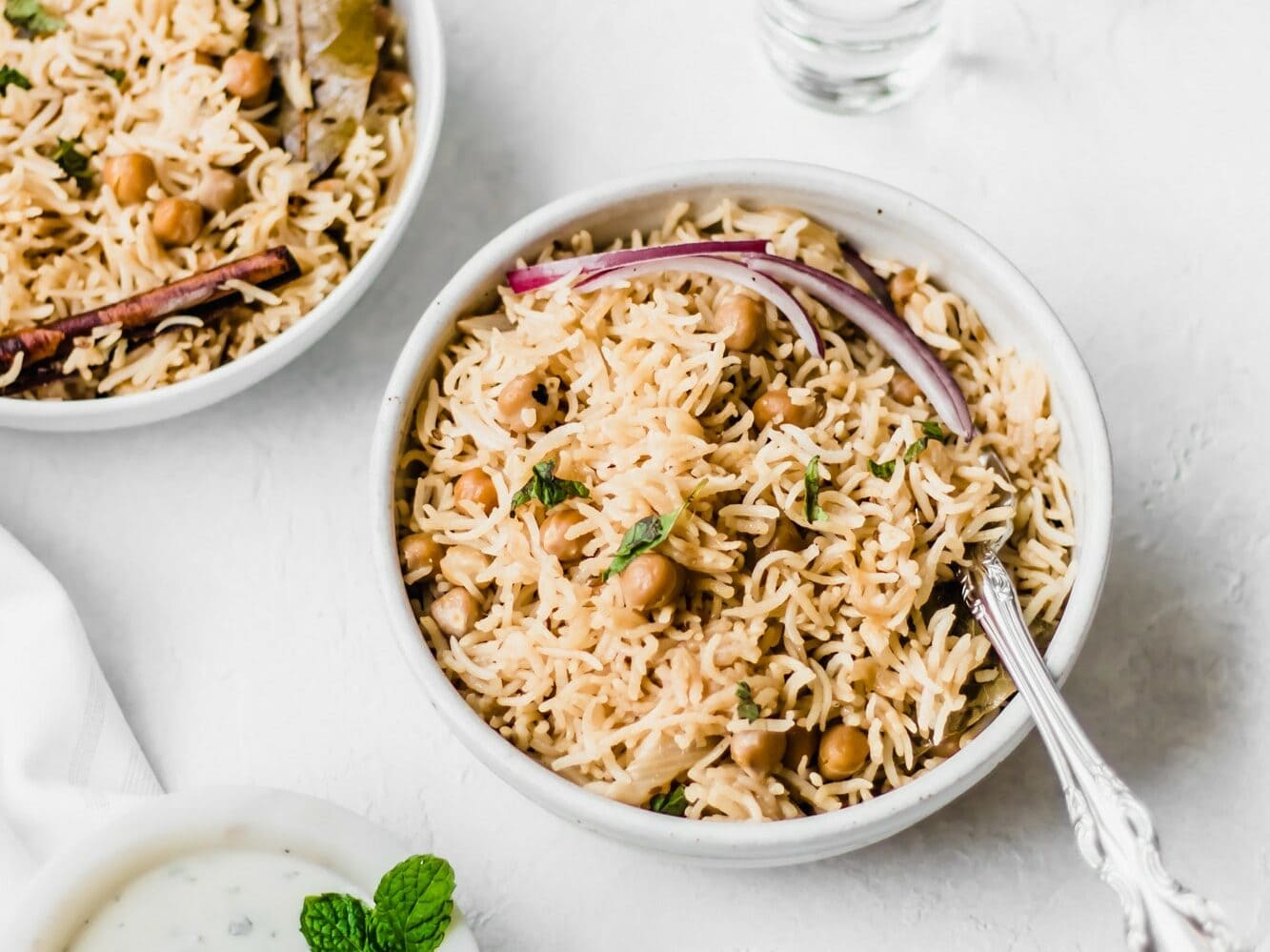About 5 years ago, I published the Instant Pot version of this Chana Pulao recipe and since then, I’ve gotten many requests for the stovetop version. Enter your email below and get it sent straight to your inbox. Plus, get recipes & tips every week! My standard answer has been to make the onion base, then cook it how you would ordinarily cook rice, but this doesn’t suffice for two reasons: So here I am, 5 years later with a proper, fail-safe stovetop Chana Pulao complete with tips for getting your Pulao rice all fluffy and separate.
Chana Pulao
Chana Pulao, or Chickpea Pilau, is made in one-pot with whole spices and aromatics. The taste is subtle, yet earthy and rich. The keys to a beautiful Chana Pulao, or any pulao really, are to:
Use a bit of ghee or butter. Deeply brown the onions. Add a balanced amount of whole spices, and a generous amount of salt. Cook the rice to perfection.
History and Origins
It’s said that chickpeas (garbanzo beans) were introduced to India two centuries ago from the Silk Road. This is probably why they’re often called ‘Kabuli‘ Chanay, noting Kabul, Afghanistan as the place from which they were introduced. I assume cooks started using them in all sorts of recipes such as Chana Masala, Punjabi Chole, and Pulao, which was brought over much earlier by the Moghuls. More Pulao Recipes: Yakhni Chicken Pulao, Mutton (Goat/Lamb) Pulao, Matar Pulao (Peas Pulao), Instant Pot Chicken Pulao
Ingredients
All pantry items. Here’s all you’ll need:
Canned chickpeas (garbanzo beans): Good quality canned chickpeas are worth it here. Progresso or Bush’s are my favorites. Garlic + Ginger: Aromatics to deepen flavor. Whole spices: You’ll need classic pulao spices such as a bay leaf, black peppercorns, cinnamon stick, cloves, cumin seeds, and black cardamom. Onion: I’ve used yellow onion here but red onion works just as well. Oil: Provides fluidity for browning onions to their proper degree and carries flavor. Ghee: A pulao essential. You can substitute with butter or replace with more oil to keep it dairy-free. Basmati rice: I use Royal’s Chef’s Secret, aged, long-grain basmati rice. Any aged, long-grained basmati will work. More on rice below. Green chili pepper: In the newer version, I’ve added an optional green chili (I usually use Serrano) for aroma and a gentle kick. This isn’t a requirement, especially if you’re serving with something spicy. Cilantro: Another optional ingredient, for a pleasant garnish.
How to Make Chana Pulao
You can make this on the Stovetop, Instant Pot, and even a rice cooker. Instructions for all three methods are in the recipe card. Here are the stovetop step-by-step directions:
Prep Rice
Make the Onion Base
Cook the Rice
Workflow Tip: This steaming stage is the perfect time to whip up some raita!
3 Essential Rice Tips
Here are a few tips to ensure fluffy, separated rice grains, every time.
#1: Know your rice
Rice to water ratio: To cook 1 cup of basmati rice, most people use anywhere between 1.5 to 2 cups of water. 1.5 cups of my rice (Royal Chef’s Secret Extra Long) needs 3 cups to cook on the stovetop. If you cook rice often, use your usual ratio. So if you normally use 1.5 cups of water per 1 cup of rice, use 2 1/4 cup broth for 1.5 cups of rice. Again, keep in mind that chickpeas absorb water and you don’t have any tomatoes or ingredients to provide additional moisture (though you’re welcome to add!).
#2: Do Not Disturb
Avoid stirring while cooking: Once the rice starts cooking, just let it be. Stirring runs the risk of breaking the rice kernels and interfering with the buildup of heat. Let it rest even after steaming: Keep the lid on even after you’ve turned off the heat. This final rest helps the rice absorb any remaining moisture and prevents the rice kernels from sticking together. Gently stir after cooking: The only reason to stir cooked rice is because resting the rice too long can make it clumpy or stick to the bottom. Use a rice paddle (not a fork) to fluff gently.
#3: Steam to Perfection
How to know it’s ready to steam: When most of the water from the surface has absorbed or evaporated and you begin to see something like potholes forming in the top layer of the rice (see video!), it’s ready for a final steam. Cover the bottom of lid with a cloth: I use old kitchen linens or a cotton cloth. The goal is to contain the steam while absorbing any extra moisture that could otherwise lead to soggy rice. Lastly, relax: Remember, if you’ve given your rice enough time to cook, even if you steam a little too soon or a little too late, you’ll be fine. There’s plenty of room for error in the steaming with cloth + resting method.
How to Double the Recipe
With all pulao recipes, to double:
Double all the ingredients, including whole spices and water. Use a larger pot (8-10.5 qt). Increase the sauté and simmer times by 2-3 minutes.
What to Serve with Chana Pulao
On the side: I serve all my pulaos with a yogurt component such as Veg/Cucumber Raita or Mint Raita, and often just plain, whole-milk yogurt. You could also serve with Kachumber Salad.
Pairing: I usually serve Chana Pulao with various Kababs or Aloo ki Tikki, but just about any type of meaty or saucy main dish would pair well.
More Rice Recipes
Matar Pulao (also 20-Minute Prep!) Chicken Biryani Instant Pot Chicken Pulao or Stovetop Chicken Pulao (Yakhni method) How to Cook Basmati Rice in a Rice Cooker Zarda (Sweet Rice)
Tried this recipe? If you have a minute, please consider leaving a comment telling me how it was! You can also take a quick picture and upload it directly into the comments. If you’re on Instagram, please tag me so I can see your creations. I truly love hearing from you. Thank you!
